A Report on the Global Biodiversity Information Facility’s 29th Governing Board Meeting and Associated BHL Meetings in Brussels, October 2022
Overview
The Global Biodiversity Information Facility (GBIF) convened for the 29th Governing Board meeting (GB29) in a hybrid format in early October 2022. This was the first meeting with in-person attendance since the GB26 held in conjunction with the Biodiversity_Next meeting in Leiden (20-25 October 2019).
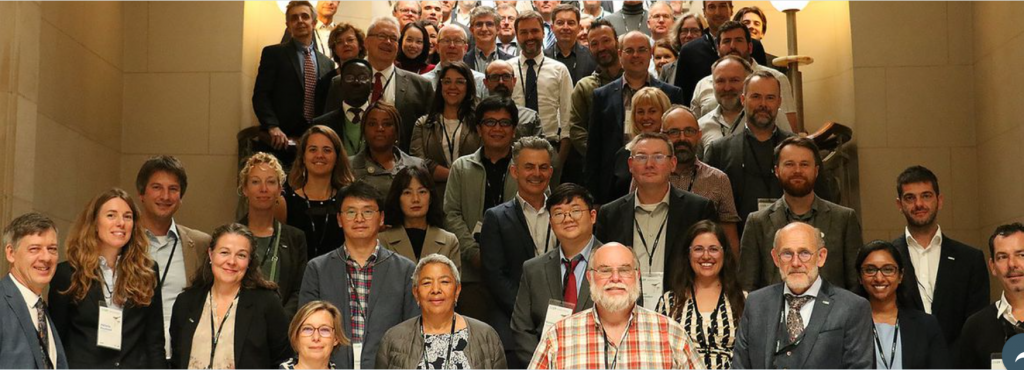
Group photo of attendees at GB29, Comics Art Museum, Brussels. Photo by Lise Goudeseune / Belgian Biodiversity Platform, licensed under CC BY 2.0.
BHL Program Director Martin R. Kalfatovic attended the meeting in person in his role of BHL Node Manager as well as Alternate Representative for the United States (and Second Vice Chair of the GBIF Budget Committee). BHL Immediate Past Chair, Connie Rinaldo, attended virtually as Acting Head of Delegation, standing in for BHL Chair David Iggulden. Preceding the first day of official meetings was for GBIF committees to meet. During this time, I attended the GBIF Budget Committee meeting. The close of the meeting saw a toast to the outgoing chair, Peter Schalk (Netherlands).

GBIF Budget Committee. From left, Søren Bundgaard-Jensen (GBIF), Nils Valland (Norway), Martin R. Kalfatovic (United States), Monika Huber (Germany), Peter Schalk (Netherlands), Eric Chenin (France), Joe Miller (GBIF). Photo by Hilary Goodson (GBIF).

Martin R. Kalfatovic with Joe Miller (GBIF Executive Secretary), Simon Malcomber (Head of Delegation, United States) and Abby Benson (Node Manager, United States). Photo by Tanya Abrahamse.
The main meetings were held in the historic Art Nouveau building, the former Waucquez Warehouse, designed by Victor Horta, and now housing the Comics Art Museum. GBIF delegates were joined by large models of Tintin, Smurfs, and others.
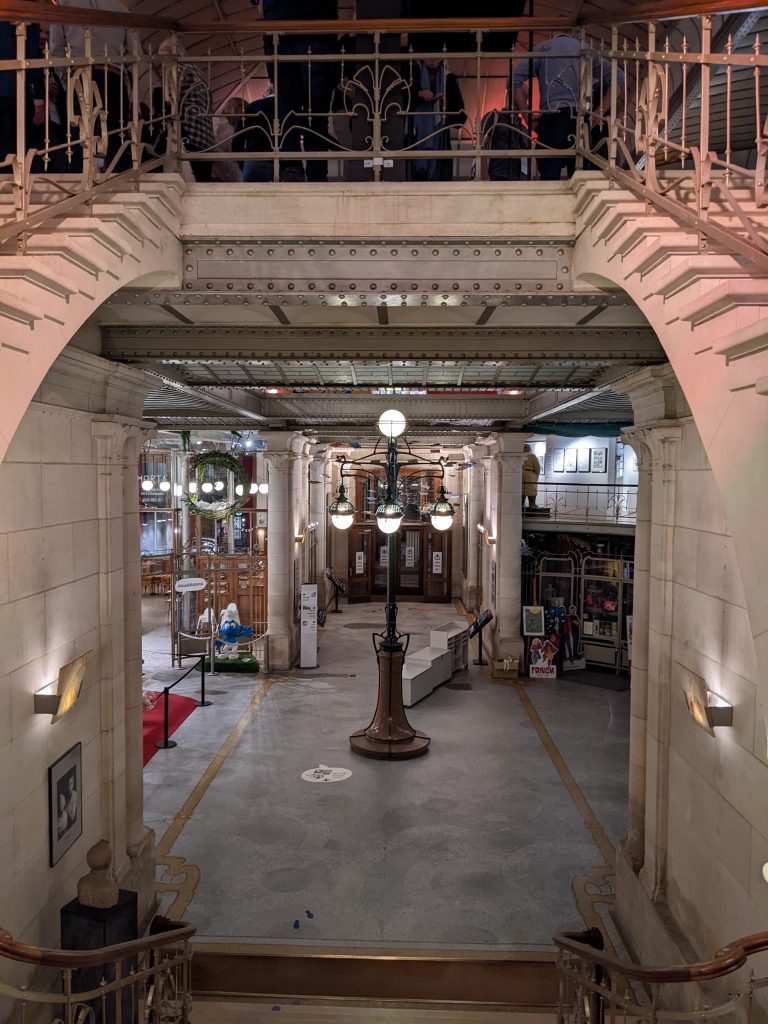
Interior: Comics Art Museum. Photo by Martin R. Kalfatovic.
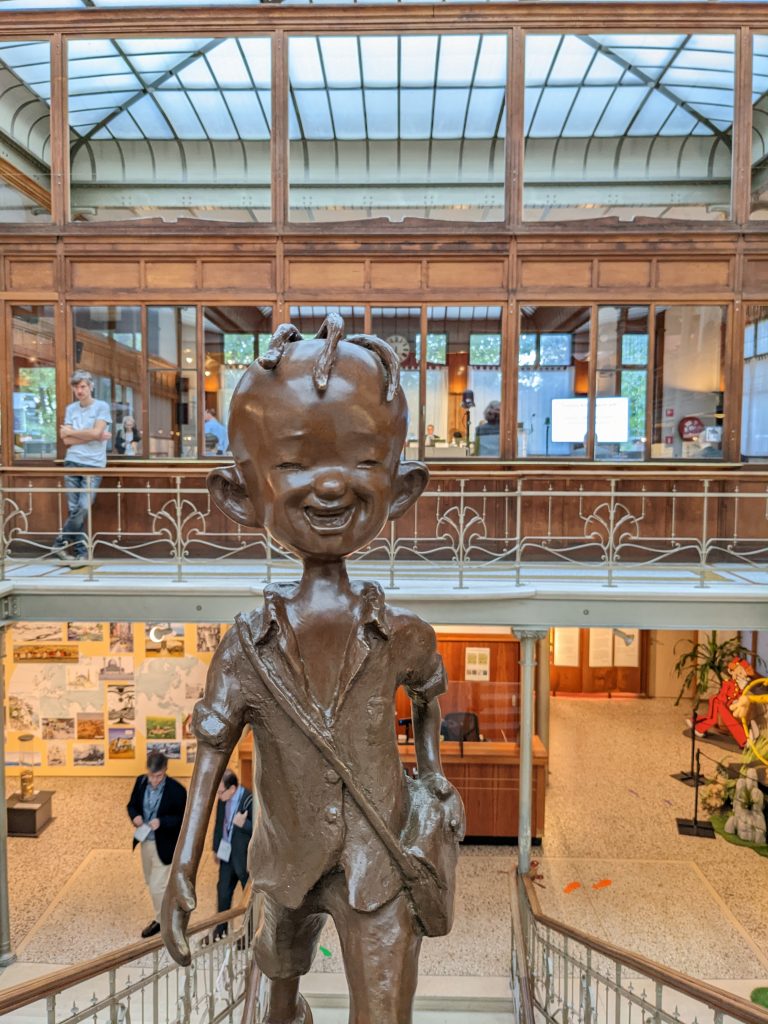
Interior: Comics Art Museum. Photo by Martin R. Kalfatovic.
Election Results
Voting members of GBIF approved the following actions (see GBIF Press Release for details):
- Dr. Liam Lysaght, Director of the National Biodiversity Data Centre, Ireland (Chair)
- Prof. Dr. Birgit Gemeinholzer of the University of Kassel (Chair of the GBIF Science Committee)
- Dr. Monika Huber of VDI/VDE Innovation + Technik (Chair of the GBIF Budget Committee)
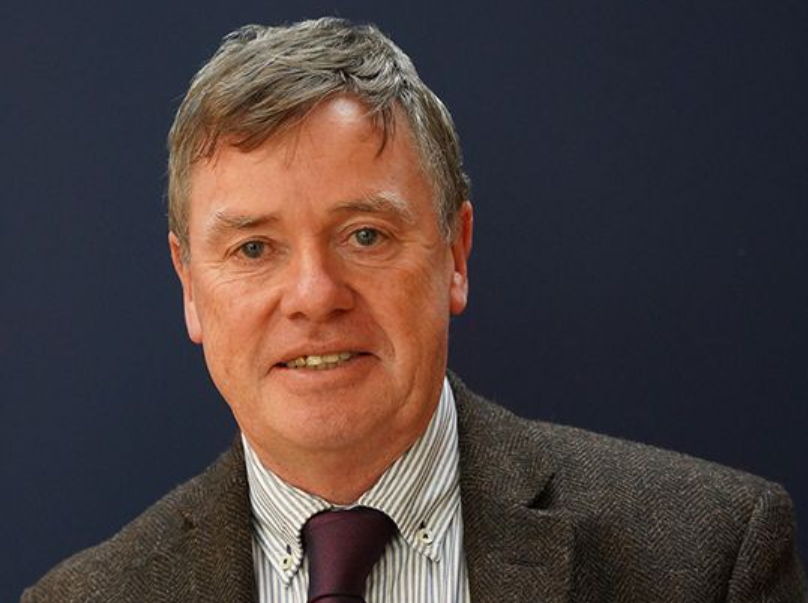
Dr. Liam Lysaght of Ireland, chair of the GBIF Governing Board. Photo by Maheva Bagard Laursen / GBIF Secretariat, licensed under CC BY 2.0.
Governing Board Meeting
Outgoing GBIF Chair, Tanya Abrahamse (South Africa) gave a summary report of the past year and also reflected on her term as chair, which, as it was extended due to the pandemic, was the longest in GBIF history. Abrahamse noted in her report, “The pandemic years have emphasized that access to accurate information is key to our and the planet’s health.” She closed her remarks with an inspiring, “Go well GBIF!”.
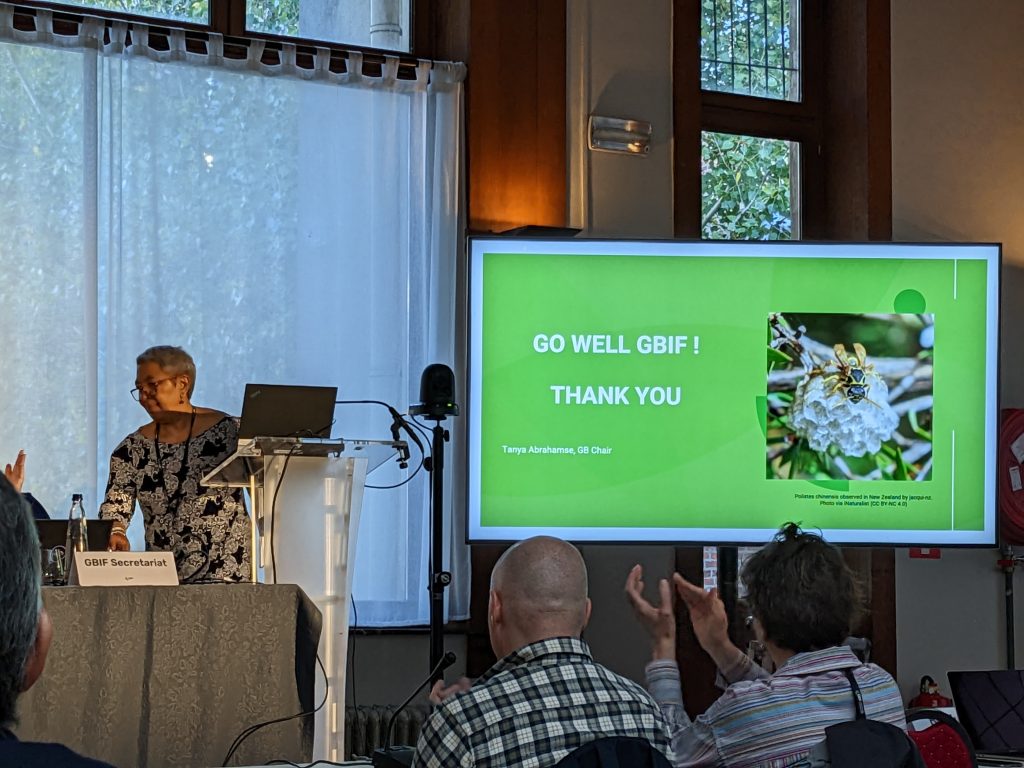
Go Well GBIF! Photo by Martin R. Kalfatovic.

GBIF Governing Board Meeting. Photo by Martin R. Kalfatovic.
GBIF Executive Secretary, Joe Miller gave the official annual report and also introduced the GBIF Secretariat staff that were attending the meeting. It was a pleasure to see this many colleagues again in person.

Joe Miller, GBIF Executive Secretary. Photo by Martin R. Kalfatovic.
Public Session of GBIF Governing Board
During the public session of the GBIF meeting, members of the Secretariat presented on a number of topics. The theme of the session was, “Looking forward: working together to achieve GBIF’s Strategic priorities”.
Hosted Dinner in the Dinosaur Gallery, RBINS
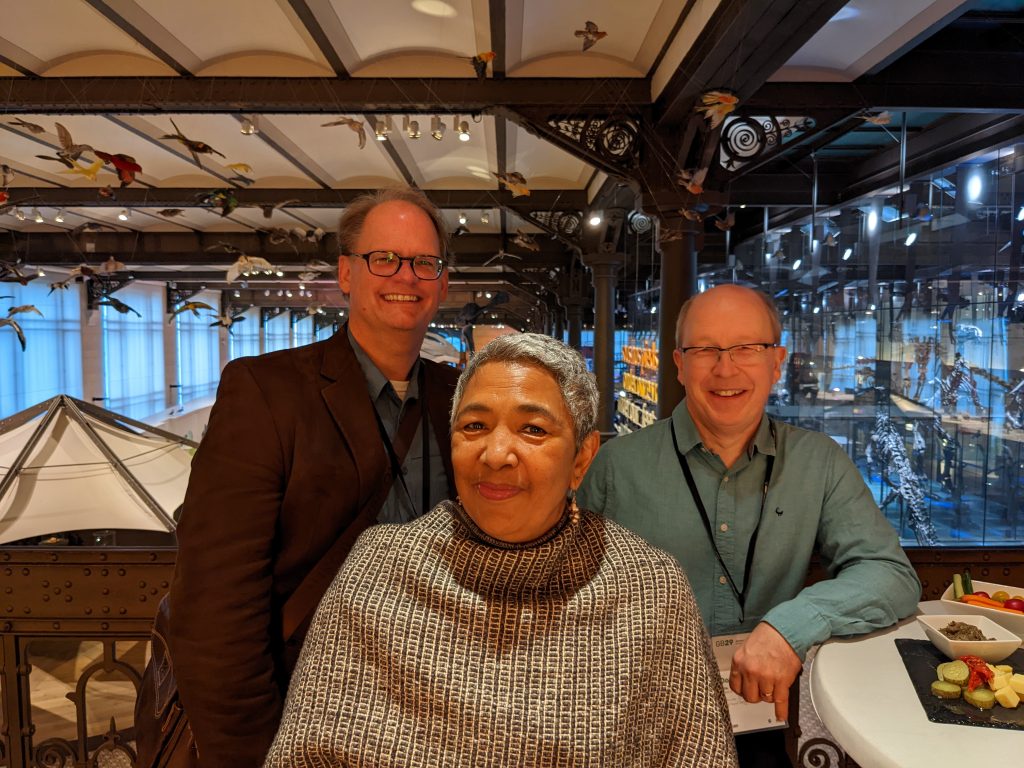
Martin R. Kalfatovic with Tanya Abrahamse (GBIF Chair) and Donald Hobern (The International Barcode of Life Consortium). Photo by Kyle Copas (GBIF).
The Royal Belgian Institute for Natural Sciences (RBINS) was the host for the GB29 hosted dinner. There was plenty of time for pre-dinner conversation overlooking the Dinosaur Gallery. Attendees also had the special opportunity to tour the Dinosaur Gallery with one of the RBINS well informed guides. The highlight of the gallery is the “Iguanodon Cage,” an amazing assemblage of nine nearly complete iguanodon (Iguanodon bernissartensis) skeletons discovered in a coal mine in Bernissart, Belgium, at the end of the 19th century. As our guide pointed out, the staging of the skeletons is not accurate by current scientific standards, but provides stunning display.
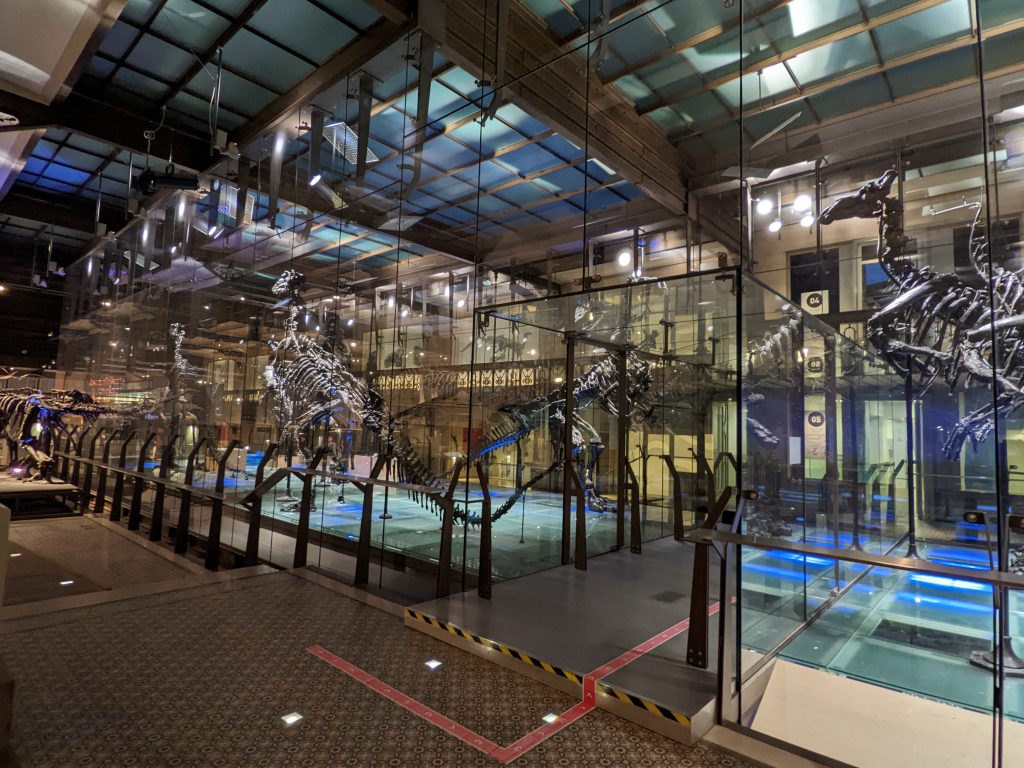
View of the Iguanodon Cage in the Dinosaur Gallery. Photo by Martin R. Kalfatovic.

View of the Iguanodon Cage in the Dinosaur Gallery. Photo by Martin R. Kalfatovic.
The museum is the repository of 26 I. bernissartensis skeletons, including the lectotype, (Skeleton Q, catalogue no. IRSNB 1534). BHL has the original description of I. bernissartensis from 1881 by Boulenger in Beneden.

Original description of I. bernissartensis. Page 600. Boulenger, G.A. Bulletins de l’Académie royale des sciences, des lettres et des beaux-arts de Belgique. 3(1), 1881. Contributed in BHL from Missouri Botanical Garden, Peter H. Raven Library.
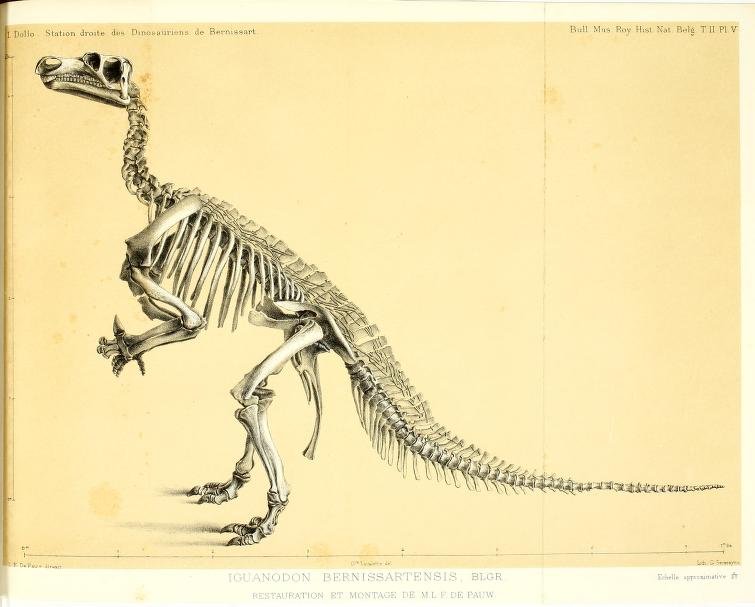
I. bernissartensis. Plate V. Dollo, M.L. Bulletin du Musée royal d’histoire naturelle de Belgique. 2, 1883. Contributed in BHL from California Academy of Sciences.
A special shoutout to the museum’s Dinosaur Gallery guides who provided specialized knowledge and a keen passion for this long gone species. The dinner, in the shadow of the iguanodons, provided further opportunity for conversations with GBIF delegates and Secretariat staff.
2022 Young Researchers Awards
GBIF was pleased to honor two early career researchers with the GBIF Young Researcher Award.
Armand Rausell-Moreno, who recently completed his Master’s degree in the biodiversity of tropical areas at the Universidad Internacional Menéndez Pelayo (CSIC-UIMP), received the award, as noted in the award citation, “for his research into developing an easy, reproducible and low-cost process for identifying groups and populations whose ecological differences may mask cryptic diversity hiding within currently described species.”
Christopher Schiller, a graduate of the Karlsruhe Institute of Technology (KIT) and now a PhD student at the Freie Universität Berlin. As noted in the award citation, “An expert jury has recognized Schiller for developing a novel demonstration of the potential for combining big data from professional and citizen science with machine-learning models to automate global-scale assessments of plant functional diversity. Nominated by the German delegation to GBIF, Schiller is the first German national to receive the award.”
2022 GBIF Ebbe Nielsen Challenge prize winners
Shared first prize winners were:
- GridDER: Grid Detection and Evaluation in R
- bdc: A toolkit for standardizing, integrating and cleaning biodiversity data
More details on the winners and second prize winners can be found at the GBIF Press Release site.
Tour de Table
The annual feature of GBIF’s Tour de Table prompted delegates to provide input on the recently commissioned report on the financial impact of GBIF. Questions posed to delegates were:
- How can we best apply the finding of the report in critical national or regional level policy issues?
- What kind of partnerships are most important to highlight or pursue based on the finding of the valuation report?
- Are there opportunities in partnerships or policy areas where we should consider stronger involvement?
Excursion to the Meise Botanic Garden / Plantentuin Meise
GBIF delegates were able to enjoy an excursion to the nearby Meise Botanic Garden / Plantentuin Meise. Tours of the library, herbarium, and other areas of the Garden were available. Opportunities for additional side and related meetings were also held at the historic Kasteel van Bouchout, also the site of the creation of the Bouchout Declaration on open biodiversity of which BHL is an inaugural signatory.

Entrance, Plantentuin Meise. Photo by Martin R. Kalfatovic.
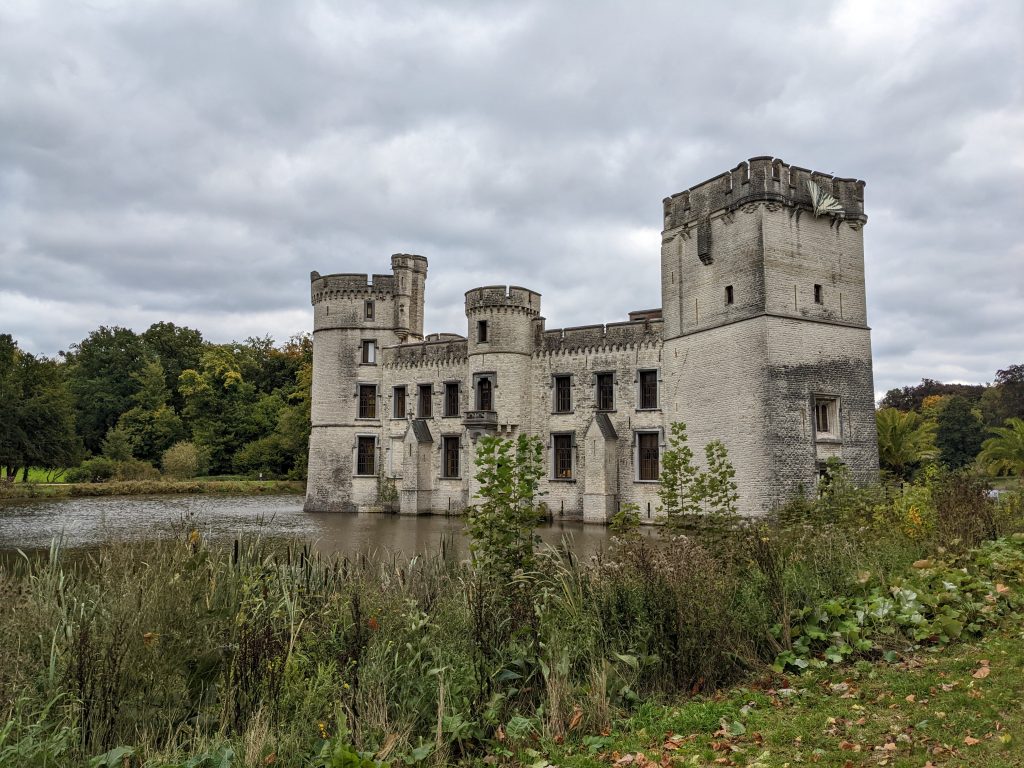
Kasteel van Bouchout. Photo by Martin R. Kalfatovic.
Public Symposium
GBIF held a public symposium, “Data beyond borders: collaborating to support biodiversity information needs in Europe and beyond” at the Centre De Conférences Albert Borschette (CCAB). The symposium was open to all GB29 delegates as well as to invited guests (both in person and virtually). Along with GBIF, the symposium was organized by the European Biodiversity Partnership (Biodiversa+).
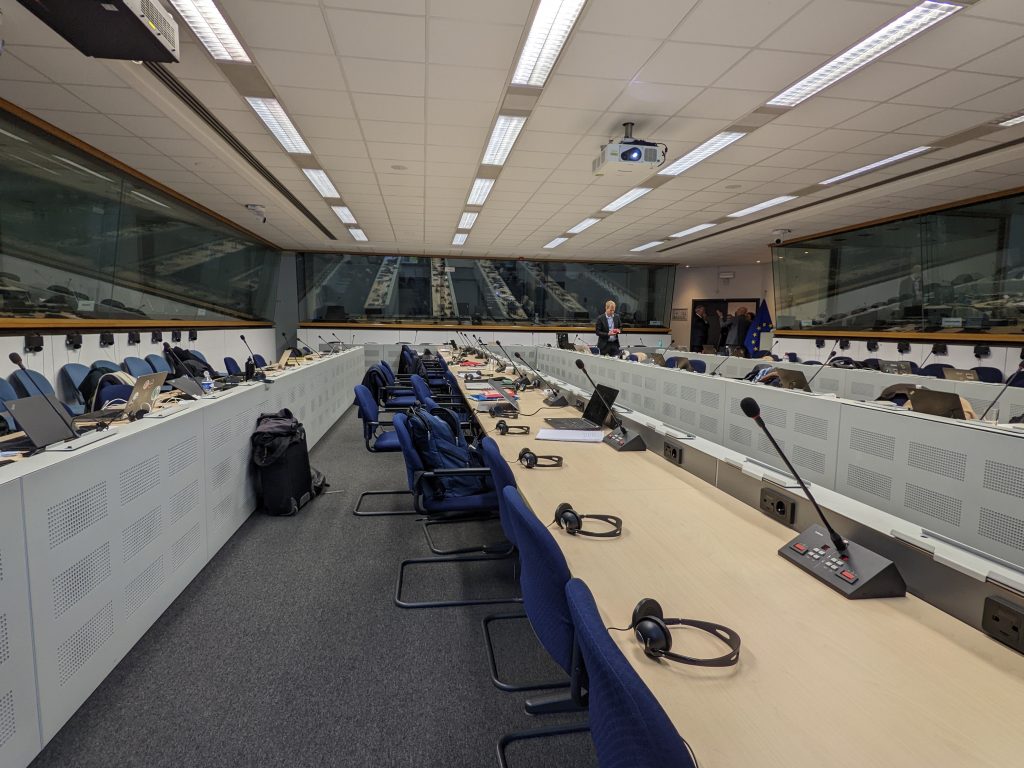
Centre De Conférences Albert Borschette (CCAB). Photo by Martin R. Kalfatovic.
The overall objective of the session was “to explore and catalyse collaboration across multiple EU institutions, in partnership with Biodiversa+, GBIF Secretariat and nodes, to exploit fully the opportunities for scaling up and harmonising efforts to improve availability of data for implementation of European and global biodiversity objectives.”
The symposium provided an excellent opportunity to learn about the collaborative efforts in biodiversity happening in the European Union.
Additional BHL Meetings
While in Belgium, I had the opportunity to have discussions with Belgian institutions interested in participating in BHL. During the excursion to Meise Botanic Garden / Plantentuin Meise, I met with Nicole Hanquart (Gestionnair scientifque/Chef de service), Bibliotheque, art et archives and Frederik Leliaert (Scientific Director, Herbarium and Library). This meeting was coordinated by Patricia Mergen (Meise Botanic Garden/AfricaMuseum) and Quentin Groom (Meise Botanic Garden). The meeting with Nicole was productive and, hopefully, will lead to the mobilization of content from Meise generated by the BHL Europe project.

Library spaces. Photo by Martin R. Kalfatovic.
I also had the opportunity to visit the AfricaMuseum/Royal Museum of Central Africa in Tervuren (just outside of Brussels). I’m tempted to write an entire blog post on my visit to the museum (which I last visited during a BHL Europe meeting in 2011). During that visit, the museum was preparing to close for a major renovation/re-envisioning that would turn this epitome of European colonialism to, upon its recent reopening (2018), into a much more inclusive and introspective place.

Wooden sculptures, “Skull of Chief Lusinga” and “Nouveau souffle ou le Congo bourgeonnant,” by Congolese artist Aimé Mpane. Photo by Martin R. Kalfatovic.

“RE/STORE” by Aimé Mpane and Jean-Pierre Müller a set of sixteen semi-transparent veils, hung at a slight distance from the existing statues. Photo by Martin R. Kalfatovic.
Due to scheduling conflicts, I was able to meet only with Isabelle Gerrard (Head of Publications Service). Meeting at the less grand, Centre Accueil Personnel Africain (CAVA), across from the museum, we reviewed BHL governance, collections, and also discussed existing BHL Europe content.

AfricaMuseum/Royal Museum of Central Africa. Photo by Martin R. Kalfatovic.

Centre Accueil Personnel Africain (CAVA). Photo by Martin R. Kalfatovic.
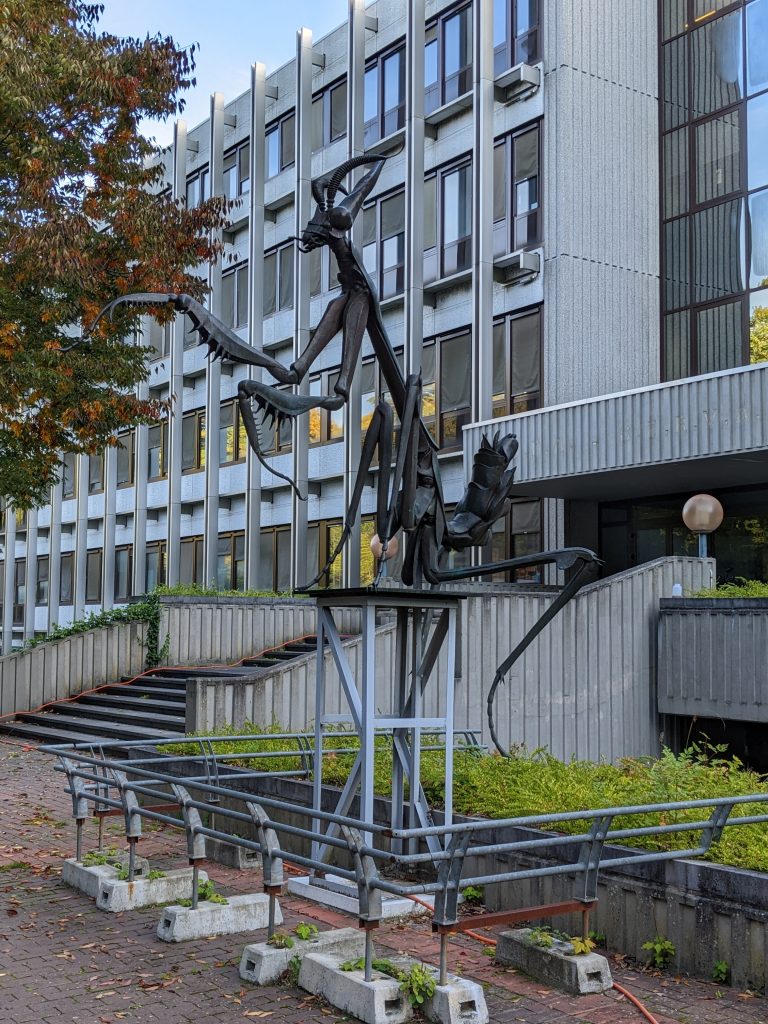
Centre Accueil Personnel Africain (CAVA). Photo by Martin R. Kalfatovic.
Special Thanks
Special thanks to André Heughebaert (Head of Delegation, Belgium) and all from the Belgian Biodiversity Platform who did an outstanding job of organizing the hybrid meeting.





Leave a Comment